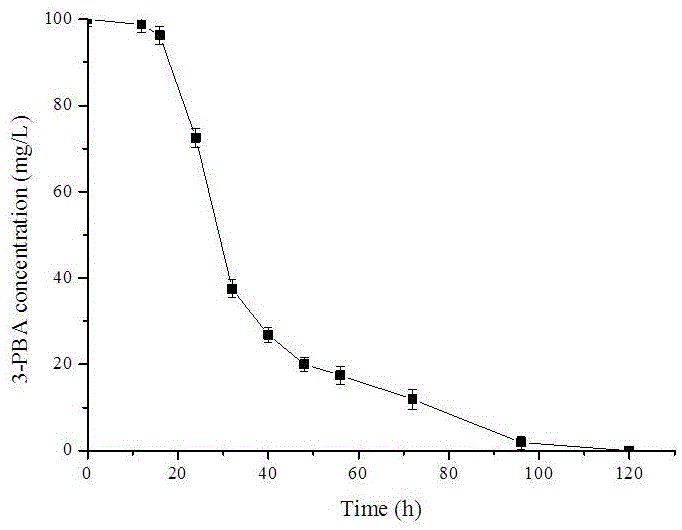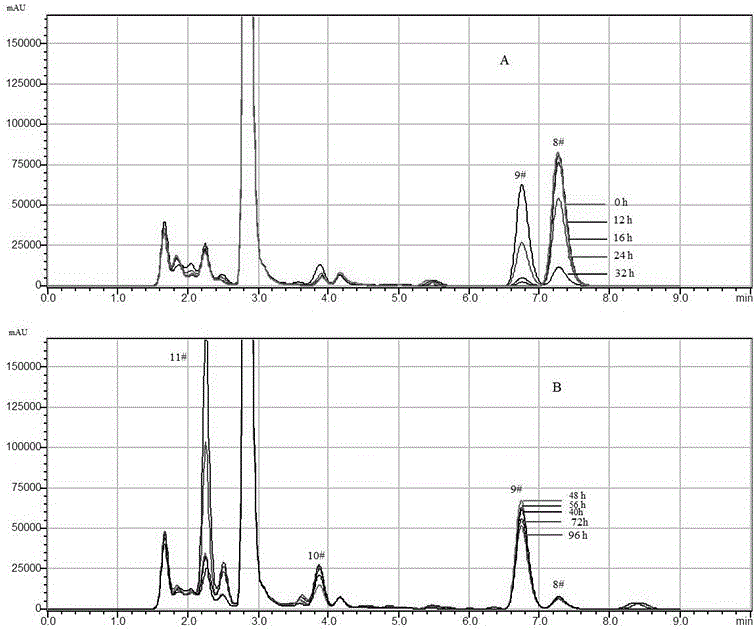Aspergillus oryzae capable of effectively degrading 3-PBA (3-phenoxybenzoic acid)
A technology of phenoxybenzoic acid and Aspergillus oryzae, applied in the direction of microorganism-based methods, fungi, microorganisms, etc., can solve problems such as restricting the sustainable development of modern agriculture, blocking biodegradation pathways, and hindering biomineralization. To achieve the effect of safe bacteria source, good bacteria resources and low cost
- Summary
- Abstract
- Description
- Claims
- Application Information
AI Technical Summary
Problems solved by technology
Method used
Image
Examples
example 1
[0016] Example 1: Degradation of 3-PBA by strain M-4 at different culture times.
[0017] Seed solution preparation: pick M-4 strains and streak on the PDA plate, culture in a 30°C constant temperature incubator for 72 hours, pick a single colony and streak on the PDA slant medium, and culture in a 30°C constant temperature incubator 72h; the M-4 bacterial lawn on the slant culture medium was eluted with sterile physiological saline and mixed evenly to make seed liquid (spore concentration was about 10 8 CFU / mL).
[0018] Take 1mL of seed solution and inoculate it into 29mL (250mL Erlenmeyer flask) of PD medium with 3-PBA concentration of 100mg / L, replace the seed solution with 1mL of normal saline as blank control, culture with shaking at 30°C and 180r / min for 5 days, every 24h Sampling, methanol ultrasonic extraction, HPLC detection of 3-PBA residual concentration. The HPLC spectra of 3-PBA before and after the treatment of degrading strain M-4 are shown in figure 1 ; The...
PUM
 Login to View More
Login to View More Abstract
Description
Claims
Application Information
 Login to View More
Login to View More - R&D
- Intellectual Property
- Life Sciences
- Materials
- Tech Scout
- Unparalleled Data Quality
- Higher Quality Content
- 60% Fewer Hallucinations
Browse by: Latest US Patents, China's latest patents, Technical Efficacy Thesaurus, Application Domain, Technology Topic, Popular Technical Reports.
© 2025 PatSnap. All rights reserved.Legal|Privacy policy|Modern Slavery Act Transparency Statement|Sitemap|About US| Contact US: help@patsnap.com



